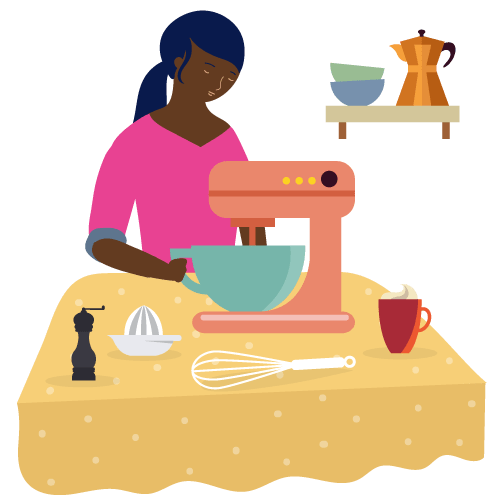Working from home seemed like the dream just a few months ago, but has suddenly become commonplace thanks to stay-home orders during the COVID-19 pandemic. And while the time saved on your former commute and the ability to work in your pajamas are definite perks, it’s possible to experience burnout at home, too. Burnout can affect your productivity, cause stress and anxiety, and add to an already difficult situation.
Here are some tips to create healthy habits and avoid WFH (work from home) burnout:

- Set working hours and create a routine: You used to have a clear distinction between work life and personal life, since you had to commute to an office. While it’s easy to imagine that working from home now means that you can sleep that extra travel time and don’t have to roll out of bed until 10 minutes before your first meeting, this is not actually an ideal scenario.
Nor is working late into the evening because you have nowhere else to be. To maintain a clear work-life balance, set defined working hours and establish a routine – such as rising at the same time everyday, going for a walk or eating breakfast, taking breaks and eating lunch around the same time. This helps you to transition from one part of your day to the other and it helps your co-workers to know when to expect you to be available.
- Set physical boundaries: Create a specific office space to work from. This doesn’t have to be a separate room, but the space should not be located in areas you go to relax (like your bedroom) and it should be used only for working. This helps create distinction both for yourself and for anyone else that you share your home with (partners, children, roommates).

Your workspace is to be used only for working – which will help you focus, and help remind the people around you that you are focusing on work. Leave your work space for lunch, and make sure to take breaks, just as you would in your office.

- Communication is key: Everyone has a different communication style, and this may be difficult to adjust to now that you can’t schedule an in-person meeting or walk down the hall to someone’s office. Communicating frequently and clearly with coworkers and managers will help prevent frustration.
This may require adjusting your communication style for others, or even learning new softwares to help keep in touch via chatting or video conferences. Try to be as clear as possible with your own communication, ask questions if you don’t understand or need help, and have patience.
- Learn your time management style: Understanding how you best manage your time will be helpful in reducing stress and making sure that you get your most important tasks accomplished. When are your most productive times of the day?

Do you live by your calendar or do you need a daily or weekly to-do list? Does your manager need to understand what you are working on? Knowing the ways that you work best and how to best create transparency for your coworkers and manager will alleviate stress and ensure productivity.

- Use your extra free time: Once you’ve established your positive WFH work/life balance, use your extra free time positively! Make sure you move your body every day – whether you are taking a walk, starting a new activity like bike riding or roller skating, or you’re working out in your home.
If you’ve wanted to learn something new or catch up on your reading, this is a great time to do that, too. But just like when you were going to the office, don’t feel bad on days you’re too tired for much extra, or if you don’t feel like the newest social media trend (like Tik Tok dancing or starting a sourdough culture) is for you.
Learning the ways to maintain a healthy balance while working from home will help you manage stress and prevent burnout during the COVID pandemic – and beyond.
